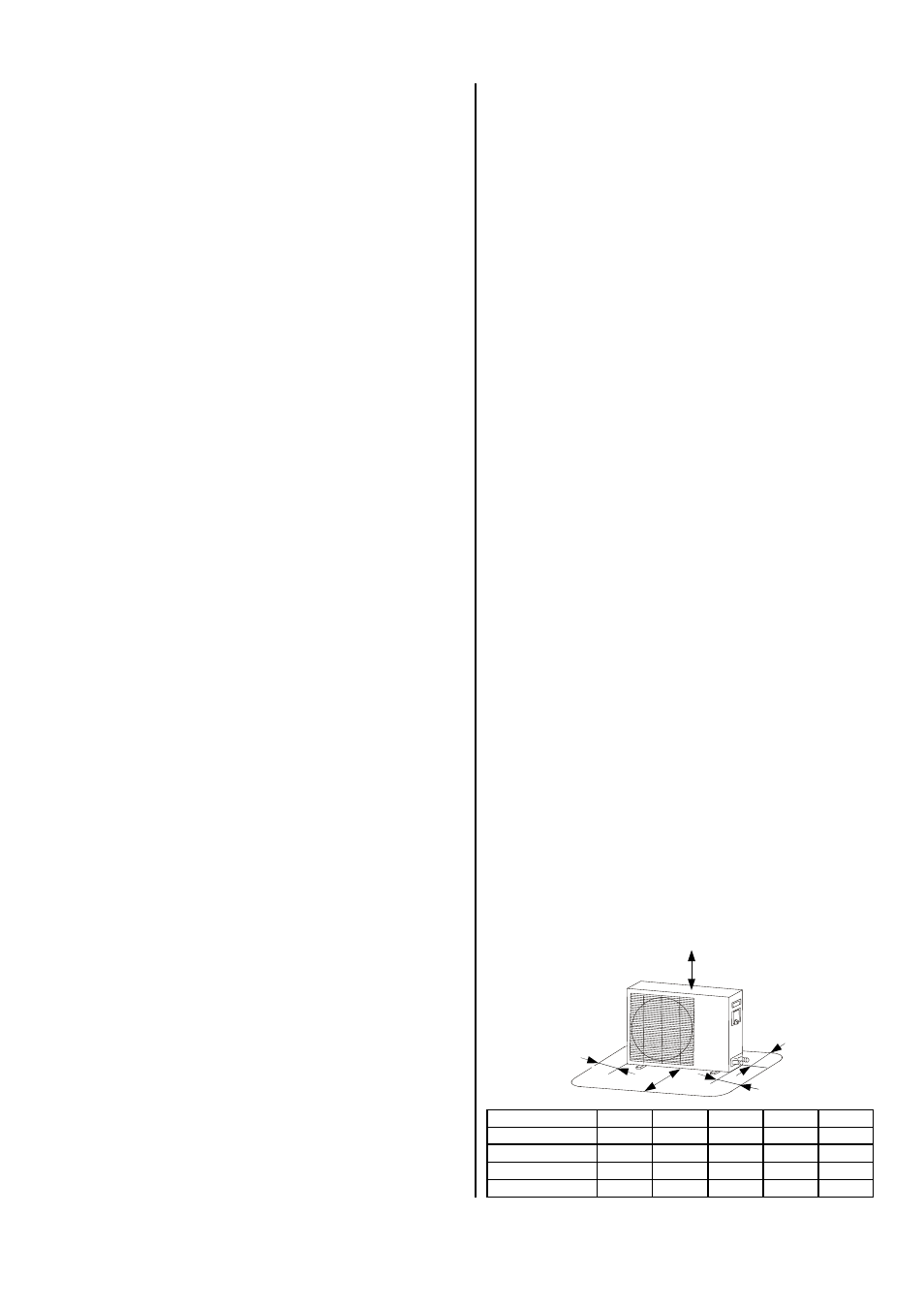Assembly instructions for service personnel – REMKO RKS 327 H User Manual
Page 15

15
Minimum distances
The chart below indicates the minimum distances that
must be maintained to ensure that the units operate
properly.
A
B
C
D
E
RKS 327 H AT
200
900
300
100
200
RKS 335 H AT
200
900
300
100
200
RKS 350 H AT
200
1200
300
150
400
RKS 371 H AT
300
1500
300
150
600
A
B
E
C
D
Assembly Instructions for
Service Personnel
Important instructions prior to installation
à
Only use the swivel nuts supplied with the refrigerant
lines. Other components can damage the thread.
à
The units are only suitable for limited use in com-
puter rooms because after a power outage there is
no guarantee that the units will restart. It is also pos-
sible that they will only start again with specific set-
tings.
à
The unit-specific, maximum length of the refrigerant
line is 10 or 15 m respectively with a maximum
height difference of 5 or 8 m.
à
Ensure the contents of the package are complete
and that the unit has no visible damage from trans-
port.
à
Any problems must be communicated directly to
your contract partner and the shipping company.
Subsequent complaints will not be acknowledged.
à
Place the units in their original packaging as close as
possible to the location where they will be set up to
prevent damage from transport.
à
Do not install the outdoor part and the indoor unit in
the direct vicinity of objects that emit intense heat.
Reflective glass surfaces, lights, etc.
à
The condensation line must be placed at an incline
of at least 2 % .
à
If this line is connected to the drainage line, an odour
seal must be installed the upper edge of which may
not extend beyond the lower edge of the indoor unit.
à
Prior to installation, the electrical values must be
checked for consistency with the data on the type
plate.
à
Remove the protective caps of the unit connections
just before connecting the refrigerant lines.
à
All electrical connections must meet the relevant re-
quirements.
à
The power supply is only connected to the indoor
unit. The unit-specific connection and sensor lines
leading to the outdoor part should be placed together
with the refrigerant lines.
à
The indoor unit and the outdoor part of the REMKO
air-conditioner are adjusted to one another from a
technical standpoint.
The guarantee becomes null and void if third-party
components are used .
à
Remember that when installing and maintaining air
conditioners, high-pressure and electrical current
can pose hazards.
à
During unit operation, some components in the cold
cycle can reach temperatures of more than 70 °C.
Be especially careful when covers are removed.
à
The air intake and outlet openings may not be
blocked by furniture, curtains, etc.
à
The refrigerant lines may not be bent or pressed.
à
Protect open refrigerant lines from moisture with
caps or tape.
à
Prevent unnecessary bends to minimise the pres-
sure loss in the refrigerant lines and ensure that the
compressor oil can recirculate properly.
à
If the outdoor part is mounted above the indoor unit,
make sure to take steps to recirculate the oil (oil ele-
vation arcs).
à
Select a location to set up the unit where air can flow
freely in and out of the device. Minimum distances
can be found in chart below
à
Make sure that the electrical lines have been prop-
erly attached in the electrical terminals.
à
Make sure that all refrigerant lines including all con-
nectors and valves are insulated against heat and
sealed against diffusion.
Wall lead-throughs
Wall lead-throughs are necessary to establish the con-
nection between the indoor unit and the outdoor unit.
Please observe the following:
à
For the connection line to the outdoor part, a lead-
through of at least 70 mm in diameter must be cre-
ated.
à
The lead-through must be placed at an incline of at
least 10 mm between the inside and outside.
à
Before beginning work, make sure that there are no
supply lines (water, etc.) located in the vicinity of the
wall lead-through.
à
We recommend cushioning the inside of the hole or
lining it with a PVC pipe to prevent the lines from be-
ing damaged.
à
After assembly is complete, the wall lead-through
must be sealed with a suitable sealing compound.
Do not use any materials containing cement or lime!
